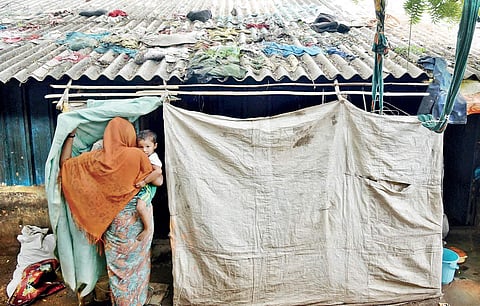

HYDERABAD: The standard living conditions of Muslims in slums of Hyderabad is worse than other communities, says a new study conducted by Southern Regional Center, Council for Social Development.
The comparative analysis, based on information collected from residents of 2,354 households from 19 slums in the city, found significant gaps in various parameters like literacy levels, age of marriage and pregnancy, job opportunities and housing.
For instance, substantial difference was noticed in the number of Muslims employed in salaried jobs in the public and private sectors vis-a-vis Hindus. The study reports that only 6.1 per cent Muslims surveyed in these slums had salaried jobs compared to 28 per cent Hindus.
Interestingly, the study also noticed that most members of the Muslim community were involved in a few occupations —mostly low-income activities like hawking, domestic labour, rag picking, rickshaw pulling and auto driving.
Muslim respondents also cited a variety of barriers in pursuing livelihood in the formal sector, like suspicion against them by potential employers and accusations of theft. The employment barrier probably stems from their access to education.
According to the report, illiteracy among Muslims in the 6-14 age group was found to be around 22.1 per cent while the same among Hindus was around 9.6 per cent. In the 15-21 age group, illiteracy was around 46 per cent among Muslims and 22 per cent among Hindus.
Interestingly, the community fared better in literacy rate among girls.
In the 6-14 age group, 83 per cent Muslim girls were attending school compared to 76 per cent Hindus.
However, the benefit does not seem to last long as 69.5 pre cent of Muslim women surveyed said that they had only studied up to Class V to X. A meagre 5 per cent had completed their intermediate or PG indicating high dropout rates. The reasons cited by many women for this was poverty, early marriage and family responsibilities. A few of them also said that lack of proper infrastructure like safe roads and transport were reasons.
Early marriage is a serious concern among Muslims as well as Hindus in the slums. The average age of marriage as reported by the surveyed women was shocking, 15.8 years for Muslim women and 15.9 for Hindu women. With early marriage, many women in both communities undergo pregnancy very early.
A whopping 44 percent of Muslim women reported pregnancy before reaching the legal age of marriage—18 years.
The study also found that 43.1 per cent of Muslims from the 19 slums were found to be living in Kuchha houses as against 26.4 per cent Hindus. Muslims also had higher average family size(5) than Hindus(4).
About 84 per cent Muslims and 71 per cent Hindus were found to be living in houses with less than 100 square feet area.